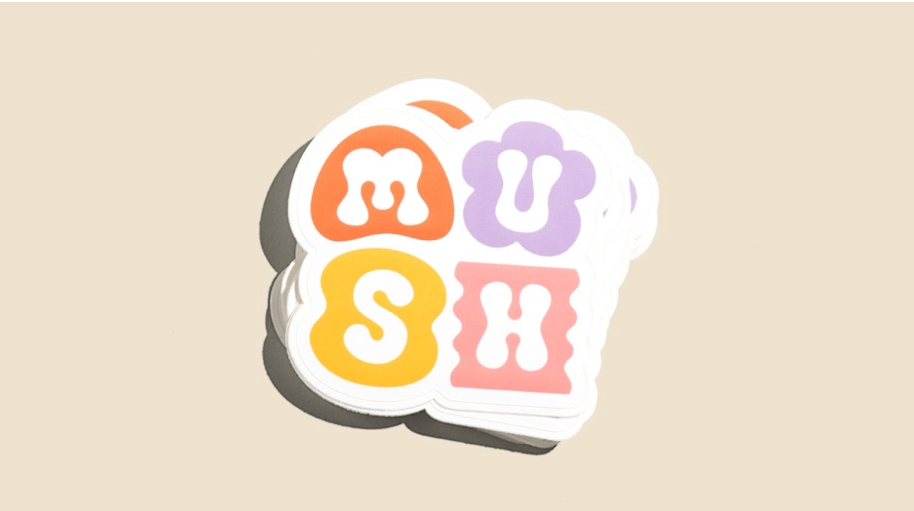
Holographic stickers serve a multitude of purposes in both personal and professional realms, from branding and promotional campaigns to personal expression and decoration. Deciding on the appropriate size for your holographic stickers is crucial to ensure they fulfill their intended purpose effectively. Here’s a detailed guide to help you navigate the decision-making process:
Purpose of the Stickers
The first step in determining sticker size is to understand their purpose. Are they intended for promotional giveaways at events, branding purposes on products or packaging, enhancing packaging aesthetics, or for personal use such as decorating laptops or vehicles? Each purpose may require a different size to achieve its goal effectively.
Visibility and Impact
Size directly impacts the visibility and impact of your holographic stickers. Larger stickers tend to be more eye-catching, making them ideal for applications where you want to attract attention from a distance or in crowded environments. For instance, if you’re using stickers at a trade show to draw people to your booth, larger sizes can help your brand stand out.
Design Elements
Consider the complexity of your sticker design. Intricate designs with detailed artwork or text may necessitate a larger size to maintain clarity and legibility. On the other hand, simpler designs can often be effective in smaller sizes, especially if they are meant for smaller items like packaging or promotional materials.
Placement Surface
Where you intend to apply the holographic stickers plays a crucial role in size selection. Stickers for small items like laptops or phones will obviously need to be smaller to fit the available space without overwhelming the surface. Larger surfaces such as walls, windows, or vehicles can accommodate larger stickers for better visibility and impact.
Budget Considerations
Your budget will also influence your size decision. Larger stickers typically cost more to produce than smaller ones due to the increased material and printing costs. Consider the balance between size and quantity – sometimes using smaller stickers in greater numbers can achieve a similar impact at a lower cost.
Audience Preferences
Understanding your target audience’s preferences is essential. Consider demographic factors such as age, lifestyle, and intended use scenarios. For example, holographic stickers targeting younger demographics might benefit from bold, larger sizes that resonate with their aesthetic preferences and attract attention on personal items like laptops or skateboards.
Visual Mockups
Creating visual mockups of your sticker designs in various sizes can provide a clearer perspective on their appearance and impact. Use design software or online mockup tools to simulate different sizes and placements. This helps in evaluating how the stickers will look in real-life settings and aids in making informed decisions.
Printing Specifications
Consult with your printing service provider about their capabilities and recommended sizes. Different printing methods (such as digital printing or screen printing) and materials may have limitations or optimal size ranges that ensure high-quality results. Understanding these specifications ensures your holographic stickers look professional and are durable.
Competitive Analysis
Researching competitor stickers can provide valuable insights into industry norms and effective size strategies. Analyze what sizes are commonly used in your industry or niche. While you don’t need to conform to these standards, understanding them can help you make an informed decision about whether to differentiate or adhere to common practices.
Legal Requirements
Some applications may have legal requirements regarding sticker size, placement, or content. For example, holographic stickers used on products or in public spaces may need to meet safety, visibility, or advertising standards. Ensure compliance with relevant regulations to avoid legal issues and ensure the stickers serve their intended purpose effectively.
Application Method
Consider how the stickers will be applied. Certain application methods, such as manual placement or automated application (using applicator machines), may influence size requirements. Ensure that the chosen size accommodates the intended application process smoothly to avoid difficulties during application.

Consider Shelf Life
Think about the intended shelf life of your stickers. Stickers used for short-term promotions or events may not require large sizes, while those intended for long-term branding or outdoor use may benefit from larger sizes for durability and visibility over time. Similarly, when designing custom mouse pads, consider the usage environment and longevity. Choose a size that aligns with the expected durability and function, ensuring it meets the needs of its intended use.
Personal Preference
Ultimately, personal preference plays a significant role in size selection. Consider your own aesthetic preferences or brand identity when choosing sticker sizes. Aligning the size with your personal style or branding vision can enhance satisfaction and confidence in your choice.
Seasonal Considerations
Seasonal factors can also influence sticker size decisions. For instance, stickers used for holiday promotions or themed events may benefit from incorporating seasonal elements and larger sizes to capture the festive spirit and attract attention during specific times of the year.
Conclusion
Choosing the right size for holographic stickers involves balancing practical considerations with aesthetic and functional objectives. By understanding your purpose, audience, design elements, and logistical factors, you can make an informed decision that maximizes impact and achieves your desired outcomes effectively. Whether for promotional purposes, personal expression, or branding initiatives, selecting the optimal sticker size ensures they serve their intended purpose with effectiveness and efficiency.